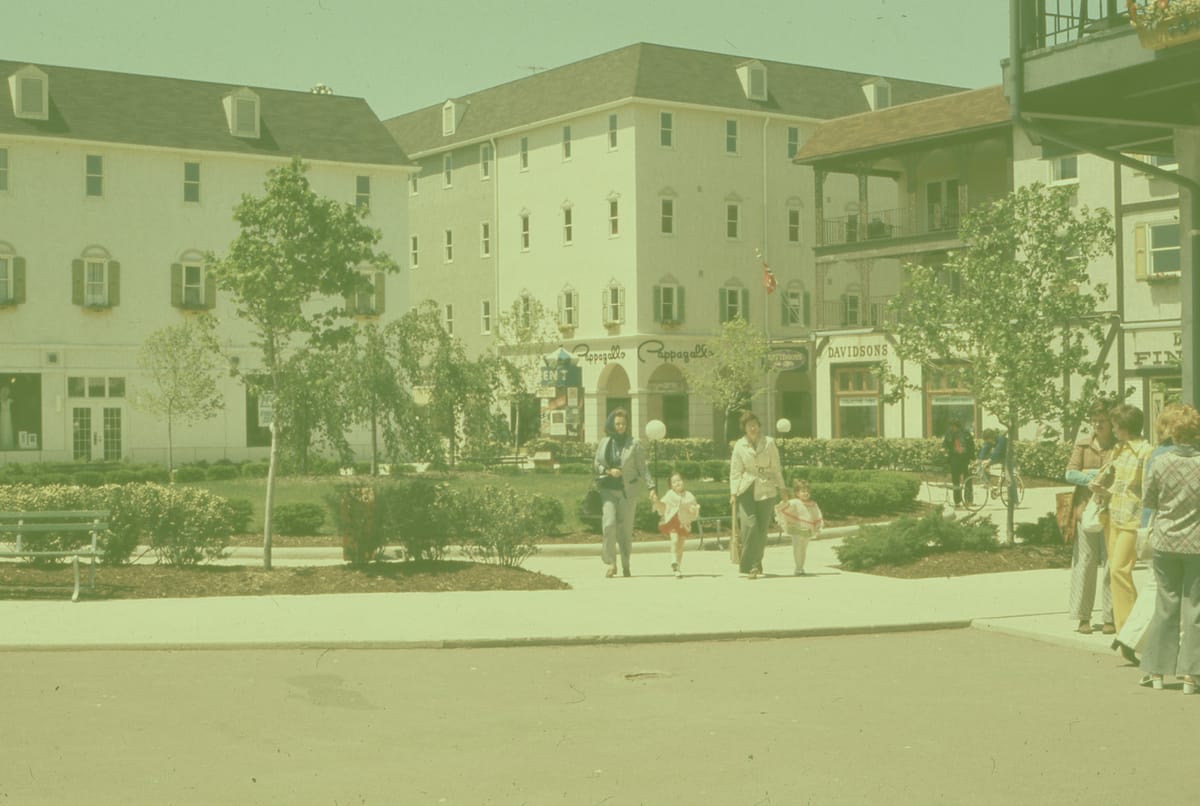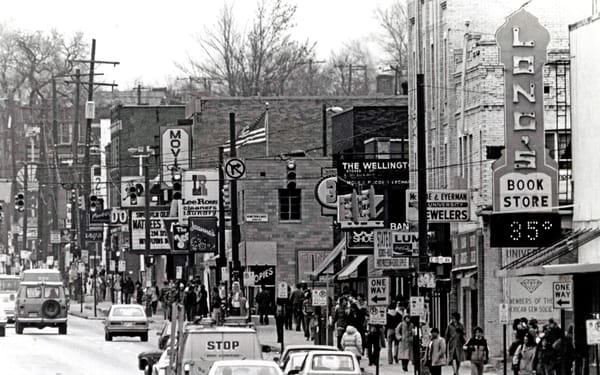More 'Zone-In' engagement, plus candidate endorsements! 🗳️ 🇺🇸
And, did you know Columbus invented off-street parking requirements? 🚘

There’s so much happening around the country with housing and zoning reform these days. For example, Richmond just legalized ADUs and limited short-term rentals in one fell swoop. New York City effectively banned short-term rentals. Columbus has an opportunity to follow suit. Allowing the construction of ADUs and ‘missing middle’ housing throughout the city while also reining in short-term rentals would have a significant impact on affordability. It would also signal that our community values housing access and stability for residents more than investment potential for property owners.
Encouraging new construction while ignoring the lucrative financial and regulatory incentives for owners to convert long-term rentals for residents into short-term ghost hotels for visitors would be a massive oversight.
On another note, add this gloomy piece of trivia to your list: Columbus was the first city in the country to adopt off-street parking requirements, exactly a century ago! Today the city’s general parking requirements are higher than ever, which is unsurprising given how we unceremoniously removed hundreds of miles of streetcar and interurban rail tracks to bequeath the public realm to both speed and storage for private vehicles.
Zoning reforms, like the ones N4MN—Columbus hopes to see passed next year, are crucial to restoring our American legacy of dense, walkable communities based on traditional development and urban design.
Get out there and let folks know that denser housing options and walkable communities are on your agenda for making Central Ohio a better place to call home.

If you live in Worthington, we’re recommending you vote for these three pro-housing candidates.
Take a moment to read why these Worthington City Council candidates support the values of housing abundance. N4MN—Columbus offers our endorsement of these candidates based on their welcoming stance on housing issues.
Amy Lloyd
As I think about the future of the Worthington community, I recognize that we need a variety of attainable housing options for current residents who need to downsize, young people who want to move here, and everyone in between. Offering a variety of housing and embracing housing density can help attract and grow local businesses, create a more walkable and sustainable community, and provide a higher quality of life for our residents. One example of this is The Hartford at Stafford Village, in the heart of Worthington’s historic district, which offers market rate and income-restricted homes for our seniors. Diversifying our housing options will help current and future Worthington residents find homes that meet their evolving needs.
Tom Burns
Worthington is a fantastic place to live because of its people, and we need to ensure all of our people have housing that meets their changing needs. Whether it is apartments, condos, patio homes, or single-family homes, I’m running for Council to help ensure we can provide the types of housing our current and future residents need. Our community must do our part for environmental sustainability, and housing built near existing infrastructure, transit stops, and amenities is significantly more sustainable than greenfield developments in a beautiful farm field somewhere. We can create more of the walkable, vibrant, and mixed-use community that Worthington has always been. As the first Latino candidate for city council, I will ensure we support the construction of attainable and abundant housing for Worthington’s diverse, incredible community of neighbors.
Rachael Dorothy
Using the shared principles of Vision Worthington and a framework of traditional development patterns, I will work to provide collaborative and forward-thinking leadership on Worthington City Council to create a more diverse, equitable, and connected community. Access to housing is a key component to offering a high quality of life, and welcoming new neighbors into our historic community will help support the vibrancy of our downtown and other neighborhoods. Building a balanced and resilient local economy requires several strategies, including more housing options and public transit along our High Street corridor. Along with creating an abundance of housing types, we can welcome and accommodate more neighbors and keep our businesses thriving.

‘Zone-In’ Engagement Opportunities
In Columbus, the process to update the zoning code is moving forward with more public engagement events happening soon. If you’re a resident of the city, be sure to attend and push for updates to the code that will help Columbus welcome the many new neighbors moving here in the future. If you plan to attend one of these events, registration is encouraged.
- Howard Community Center
Saturday, Oct. 21 from 10am to 1pm - Centennial High School
Thursday, Oct. 26 from 5pm to 8pm - Columbus Main Library
Monday, Oct. 30 from 11am to 2pm - Barack Community Center
Thursday, Nov. 2 from 5pm to 8pm
Here are some strategies you can suggest to allow for more housing:
- Allow duplexes, triplexes, and other medium-density (i.e. “missing middle”) housing in all neighborhoods by right, meaning without variances
- Eliminate minimum parking requirements
- Offer fast-track approvals for projects with affordable housing units
- Provide simple pathways for accessory dwelling units (ADUs) used as long-term residences throughout the city, with additional benefits for ADUs that house income-qualifying residents
- Modernize the role of area commissions in approving housing
- Create special permitting pathways for non-market and de-commodified housing
- Relax height restrictions, especially along transit corridors
- Prioritize/expedite approval process for projects that increase housing stock (as opposed to projects removing housing units)
- Create simplified permit pathways for innovative housing options like co-living, cooperative residences, and tiny homes
- Diversify housing voices in public participation (e.g. area commission approvals) and consider the housing needs of future residents, not just current homeowners
📚 The Book Beat

Trounstine, J. (2018). Segregation by Design: Local politics and inequality in American cities. Cambridge University Press.
Trounstine’s largely quantitative work of political science is a clear portrait of how white property owners have leveraged the power of separate political jurisdictions to exclude others while enriching themselves. Segregation by Design reveals how “the preferences of white property owners have been institutionalized through the vehicle of local land use policy” since at least the postwar period (p. 3). Using land use and zoning policy in combination with school district boundaries, affluent communities have “promoted the generation of property wealth through segregation and unequal allocation of resources” (p. 12).
Using detailed data, Trounstine shows that “when central city politics does not favor their interests (and suburbs do), white and upper-class residents are more likely to reside in different cities, rather than in different neighborhoods” (p. 168).
Conditions that white residents might consider unfavorable include “minority mayors” and “more active policy agendas” (p. 184). The data bears this out as well, with Trounstine showing that between 1970 and 2000, “[n]eighborhoods became more racially integrated within cities, but whole cities became more racially homogeneous, increasing segregation between them” (p. 21). The implication of this point is that if whites had only desired a more homogeneous racial environment, staying in white neighborhoods within municipal boundaries would have sufficed. Instead, the reality that white isolationism accelerated over this thirty-year period demonstrates that whites actually sought to escape urban municipalities altogether.
Why should state and federal law intervene to address the impacts of local inequalities driven by this jurisdictional fragmentation?
One major rationale, according to Trounstine, is that the decisions suburban communities make have “profoundly affected nonsuburban residents while preventing them from participating in the decision-making process” (p. 21). This tugs at the notion of democracy, with the idea of “political equality” and “representative government” becoming “hollow concepts” in practice (Ibid.). The exclusionary policies of suburban communities, as Trounstine writes, have a profound effect on nonsuburban residents.
🗞️ Here are your links 🏘
Local + Regional 🌳
- What’s the matter with zoning?
11 September 2023, Ohio Capital Journal - FAQ: Form-based code, a zoning reform plan coming to Cleveland
13 September 2023, Signal Cleveland - Cincinnati sets consequences for illegal evictions
14 September 2023, WVXU Cincinnati - One year later, Intel construction on schedule but suppliers largely a mystery
24 September 2023, Columbus Dispatch - New home construction in decline as Licking County needs housing for Intel workers, growth
24 September 2023, Columbus Dispatch - Pet Friendly Act: Ohio lawmakers consider tax credit for landlords who allow pets
25 September 2023, Columbus Dispatch - New mixed-use development with apartments, retail and more proposed for old Cooper Stadium
2 October 2023, Columbus Dispatch - Longtime mobile home park in middle of major proposed development in Dublin
5 October 2023, Columbus Dispatch - In Hilliard, not everyone agrees on a plan for growth. The debate may become common in central Ohio.
9 October 2023, WOSU 89.7 NPR News - Columbus City Council resolution lays path for zoning changes to bring more urban density
10 October 2023, Columbus Dispatch
National 🇺🇸
- The YIMBYs are coming: Inside the fight to build more housing and bring down home prices
7 September 2023, Business Insider - Opinion: The Big City Where Housing Is Still Affordable11 September 2023, The New York Times
- In Yards, Offices and Basements, New York Hopes to Build 100,000 Homes
21 September 2023, The New York Times - Biden's top economist says the key to ending the housing crisis is giving cities and developers monetary incentives to build more affordable homes
1 October 2023, Business Insider




